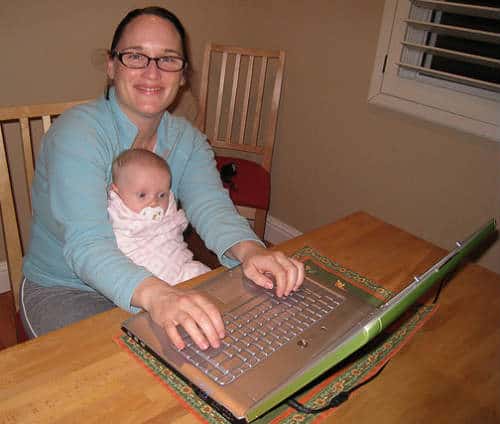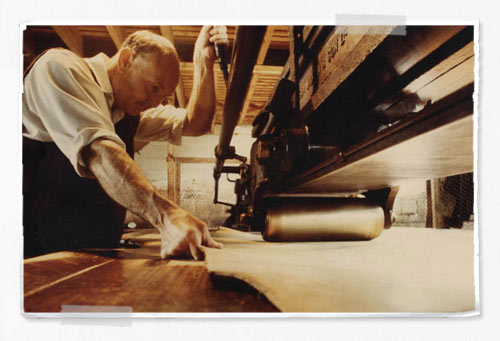Last Updated on October 12, 2024 by Dawn Head
Earn Money from Home, Whether you’re looking for a way to supplement your family’s budget or you’re in the market for a creative outlet, finding a gig where you can earn money from home is gratifying.
One of my goals is to create and equip a proper home office. I really want a nice stand-up desk to work at, the Jason L collection has my eye…we’ll see. The 12 ways to earn money as a stay-at-home mom will give you ideas to start earning more money for your family.
Earn Money from Home as a Stay-at-Home Mom:
Find a Freelance or Consulting Gig
Apply skills you acquired from your previous jobs or hobbies to a new consulting gig.
Write out your ideal job description so you have a focus, define your rate, and start your job search.
Start your search with your personal network.
Then look on Craiglist, and job sites like Indeed and Monster.com.
There may also be agencies in your area that focus on placing freelancers, so ask around and do a Google search to see what turns up.
Crush Your To-Do List with the Erin Condren LifePlanner
Open an Etsy Shop
If you’re a crafty mom, consider opening an Etsy shop.
I know many stay-at-home moms (and even one mom of twins who works full time) who sell their wares online.
If you knit your kids’ sweaters, make reusable diaper pale liners, re-purpose old sweaters, or even paint landscapes in your spare time, consider selling your art on Etsy.
Be sure to read this article about selling on Etsy before you open your shop.
Land a Part-Time Job
Look for a part-time job in your area of expertise.
Again, start with your network.
Can you get a part-time job at a place of previous employment?
Do any of your friends or colleagues know of a job that would be great for you?
If not, look for online networks that advertise jobs specific to your sector.
I have quite a bit of fundraising experience, so I was able to find a part-time job on my state’s nonprofit job board.

Babysit or Nanny for a Friend
If you have friends who are working parents, odds are they’re paying for childcare.
Lots of parents would love to hire a nanny for their child, but think they can’t afford it.
You could be the answer. Offer to watch your friends’ kid(s), full or part-time, for a reasonable rate.
No idea what to charge?
Check out Care.com’s babysitting rates calculator.
Babysit or Nanny for Someone You Don’t Know
If you don’t have friends who need childcare, sign up (for free) for Care.com or Sittercity to find parents seeking a nanny or sitter.
You can search for jobs that fit your schedule and lifestyle, then apply for them.
Before you apply, be sure to submit a good cover letter and resume and read tips for how to get hired.
Participate in Market Research Studies
Focus groups can be an easy way to make money on your own schedule.
You might go into an office to taste food and give feedback, or have research staff come to your house and interview you about a product.
In return, you’ll get paid anywhere from $25-175.
Depending on how long the study takes, it can be a great return on investment.
To find reliable market research companies in your area, try asking around and googling “market research [city name]” or “focus groups [city name]”.
Donate plasma
This definitely crosses a line for some folks, but “donating” plasma can be a steady source of income.
For 45 minutes of your time, you can get paid $20-50.
Some donation centers allow you to come in twice/week, while others limit it to once/month.
I donated plasma in college and, if you decide to go this route, be aware that you’ll likely run into some sketchy characters in plasma donation centers.
Start a Blog
Many moms jump to blogging when they’re thinking of ways to earn extra income.
It’s a viable option, but the truth is, competition is fierce.
If you’re going to start a blog to make money, be sure you have defined goals, a strategy, and knowledge about how to monetize it.
Know that it will take time to make money and that, in the first few months (or years), you won’t get many visitors.
This post will get you started with affiliate programs.
Throw “Tupperware” (or Other) Parties
If selling products is your thing, you’ll find plenty of opportunities to become a consultant through Tupperware, Pampered Chef, Mary Kay, Cutco, eBay (I use BiggerBids.com) and even a green products company.
If you go this route, just be sure not to impose on your friends and family members.
Inviting them to parties is fine.
Making them feel obligated to come to multiple parties and buy something they don’t need is not.
Have a Garage Sale
Do your spring cleaning early and sell everything you might otherwise donate.
Go through clothes, toys, and household goods.
If you haven’t used something in the past 6 months, or it doesn’t fit anymore, get rid of it.
Garage sales can be a lot of work, but it might be worth it for you.
Before you commit to having a garage sale, use a Yard Sale Checklist.
Consign Old Clothes and Toys
A step up from a garage sell and a step down (effort-wise, anyway) from selling on Ebay, consigning is a great way to make money from clothes and toys you don’t use anymore.
Especially if you’re into name brands.
Research consignment shops in your area to see what they’re looking for, then bring your used goods in.
Keep in mind there are different types of stores and events that accept consignments.
Some focus exclusively on women’s clothing, while others skew toward children’s toys and clothes.
And some only accept clothes from the past season or two.
Sell Items on Ebay or Craigslist
If a garage sale isn’t your style or it sounds like too much effort for you, consider selling your castoffs on Ebay or Craigslist.
If you have clothes in good condition (kids’ or adults’), toys, used appliances, or even a collection you’re pruning, you might be able to make a reasonable profit on those sites.
Check out this awesome service for making your eBay auction and store sell more and for more money. BiggerBids auction templates
You should can also be saving money by shopping online and using online coupons.
How do you make extra money as a stay-at-home mom?
How do you earn money from home?
Can You Make Money Travel Blogging
Can You Make Money Travel Blogging?
This post is part of Women’s Money Week.
For more awesome content about Entrepreneurship check out womensmoneyweek.com
Lot’s of people want to quit their jobs and travel the world.
And they hope to fund their travel with travel blogging or freelance writing.
Back in 2008 when Kimberly and I started GGTG that was one of our goals too.
In our first few months we picked up a lot of press and our visitors spiked.
We blogged our way through Argentina (check out our favorite posts on Argentina foods and Argentina parrilla).
But it took over a year an a half until we were making any “real” money.
But, we got there.
We started making money travel blogging.
And lots of others have too.
We’ve put together four tips to help you if you’re trying to figure out if you can make money travel blogging.
Don’t be in the travel blogging business to make money.
If you want to share your travel experiences and advice with not just your friends and family.
But anyone else interested in following your travels then you should travel blog.
If you have a unique perspective or experience that would be helpful or inspirational to others then travel blogging might be for you.
But you should not start a blog for the money.
You’ll be wasting your time and you’ll burn out before you start earning.
Blogging is a great way to improve your writing and share your insights, but I wouldn’t recommend it as a place to start earning money.
If you are looking for an online way to fund your travel, look beyond the travel blog.
A better way to fund your travel is to take up freelancing or consulting.
You can become a freelance writer and write for other blogs or websites.
Or you can consult on any range of topics you already know about – like social media.
Earlier today I posted about how to fund your travel for $97.
If you’re interested how to build an online business – check it out.
A better way to “fund” your travel is to try to travel for cheap or free.
Volunteering and WWOOFing are great ways to travel for cheap or free.
Here are some resources to get you started:
- 11 Things to Know Before You WWOOF
- 21 Resources for Volunteering Abroad
- How to Travel for Free
Committed to being an entrepreneur in the travel blog business
This is a the single most comprehensive post about how travel bloggers make money from their blogs.
The posts includes tips about contextual ads, writing for other websites, affiliate products, private advertising, sponsored posts, digital products, sponsorship, consulting, and membership.
Besides that post, here are a few others to check out.
- Earn Money from Home – 12 Ways to Make Money as a Stay-at-Home Mom
- What are the Best Ways to Make Money While You Travel?
- 5 Ways to Travel the World While You Work
- Should You Sell Links
- Making Money Travel Blogs
- Travel Blogger Honesty Survey
- Travel Blog Advertising Survey Results
- How I Make Money and Afford to Travel
- Nerdy Nomad Income Reports
- The Myth of Getting Paid to Travel
So what do you think, can you make money travel blogging?
Is it a form of entrepreneurship for you?
How to Barter in Markets While Traveling
If you’ve traveled internationally, you know that one of the best places to get good deals on everything from produce to souvenirs is open-air markets.
The hustle and bustle, energy, and chaos create a unique cultural experience.
Learning how to barter in markets can be a challenge and even a competition among travelers as they try to find out who can get the lowest price.
But travelers can take bartering too far.
One of the reasons we support local markets when we travel is to help invest in the local economy, so it’s important to make sure you’re bartering to pay a fair price, rather than bartering just to barter.
It’s great to get a good deal, but in the ideal situation, both parties are happy: You’re satisfied with your bargain and the seller is feels like you settled on a fair price.
How to barter in markets
Read on to learn how to learn how to barter in markets around the world.
Photo credit: ChameleonGreen
Take a Local with You
If you’ve built relationships with locals during your travels, ask if they’ll come with you to the market.
They can help you determine if you’re getting a fair price or if you should walk away.
If there is a language barrier, a local can act as a translator and help you communicate with the seller.
One word of caution: Sometimes local tour guides have relationships with vendors and get kickbacks when they take tourists to shops.
While this isn’t inherently bad, it may mean that you’re not getting the best deal possible.
Hauz Khas Village Pubs for the Party Peeps
Shop Around
Just because you fall in love with the first djembe you see, doesn’t mean you need to buy it.
If there are several markets in town, and you’re trying to purchase a big ticket item, shop around.
If you don’t see exactly what you want, ask if they are made locally.
If so, it may be worth it to pay a trip to the person who makes them for a better deal and a greater selection.
Be Kind
It’s definitely okay to be confident, but it’s equally as important to be kind when dealing with local vendors.
Remember, you are representing future travelers and setting the tone for their experience.
If you don’t want to buy something, it’s okay to be firm and walk away, but do your best to be nice about it.
Know the Going Rate
It’s important to know what the market rate is for whatever you’re planning on buying, especially if it’s a big ticket item.
Know the market value will help you make an educated decision when you are in the heat of the moment bartering.
Start Low…but not too low.
You want to start low enough that you have some room to negotiate, but not so low that you offend the seller.
Give yourself some room to haggle so you can meet in the middle on a fair price.
Remember too that you are a guest in the country you are visiting.
Do your part to travel light and be eco-friendly when possible.
All in all, bartering in local markets is a thrilling experience.
As a traveler, it’s important to keep in mind that a small amount to you can make a big difference for the seller — so be sure to keep that in perspective as you barter in markets.
When done right, bartering will be a good experience for you and the seller.
After spending a few months traveling last year — bartering for everything from gas to bananas — it was almost disappointing to go into a store back in the US and pay a set price for my produce.
When did you learn how to barter in markets?
What are your tips for bartering in markets?
How do you make sure the price is fair for you and for the seller?
Challenges of Running a Sustainable Business
In the last year, my wife and I started up our own company based in the Lake District, UK.
It’s an eco-friendly business promoting travel bags, outdoor gear, and a positive lifestyle.
It’s also a company that we’re doing our best to run on sustainable principles.
We are learning to manage the challenges of running a sustainable business.
How is it possible to combine such principles with commercial good health?
What are the tough choices which any such business faces?
Here are our reflections on running a sustainable company.
We’d like to lift the veil and describe some of the everyday choices we face.
We hope that you take away a realistic picture of the possibilities and challenges which any eco-based business faces today.
What materials should we use for our products?
We produce bags and think a lot about the organic fabric in our rucksacks, the vegetable tanned leather in our wallets, and the recycled polyesters in our travel bags.
But it’s worth being clear that 100% sustainability doesn’t exist.
However natural the materials that a company uses, those materials still need to be produced, processed and shipped.
And that involves energy, fuels, emissions and a carbon footprint.
We’ve discovered that it’s therefore all about degrees of sustainability.
About making the most informed choices that we can, while still running a viable business.
We’ve been thrilled to learn that there are always positive steps that we can take.
It’s been an education along the way.
We produce bags.
We’ve been inspired from the start by old mountaineering bags, traditionally made of cotton, wool and leather.
Working with RITE (Reducing the Impact of Textiles on the Environment), we quickly realized that we wanted to use organic cotton rather than its conventional cousin.
Organic cotton requires far less pesticides, insecticides and water in its production.
It’s also been heartening to learn of positive choices we can make even with synthetic materials.
For example, we’ve used recycled polyester rather than virgin polyester, thereby saving 50% on water, 20% on energy, and 60% on air pollution.
That feels good.
However, not all our materials are organic or recycled at present.
Our bags can contain as many as fifteen components each.
And in some cases, we simply haven’t found a more sustainable alternative yet or alternatives are too expensive at this point in our growth.
It’s about balancing the ideal and the realistic.
You have to know where your heart is set.
What partners do we team up with?
Running a company is all about making connections and working with other people.
You have to ask yourself, “Do you want to work with local or global partners?”
Do you work with an expensive local partner who uses non-sustainable materials, or a cheaper global partner committed to sustainability and good employer practice?
In our case, we work with both local and global partners but always sustainable ones.
Take the leather we use in our products. When we started, we had no idea of the extent of chemical use in producing modern leather.
Or that in ancient times, vegetable tanning was the norm.
Or that a beautifully worn hundred-year old wallet is almost certainly vegetable tanned.
Learning this, we knew we wanted to opt for the vegetable tanning route.

The question then was where to access this product. We were thrilled when we found the only remaining traditional oak bark tannery in Britain.
They have been able to supply us with leather for certain products.
However, we’ve also needed other leather for other products.
And for this we’ve had to travel to a tannery in southern China.
The Chinese tannery produces 70% vegetable tanned product, with an initial 30% chemical treatment.
It’s not ideal.
But they’re developing a new 100% vegetable tanned leather for production.
So some of these things are just a matter of time.
Finding the soul in commerce
In all our everyday dealings with partners, we’re also constantly looking for the human face in business.
Obviously business is partly about money, but for us it’s also an expression of values.
When my wife and I met backpacking years ago in Latin America, we knew that we were committed to the same things — getting out, adventuring and making connections.
So for us, the human element in business is all-important.
When we were looking for a bag maker, we found our partner Henry.
Henry’s dad originally started their business in Hong Kong.
Today, they remain a small family business, now located in mainland China.
We like the family element and Henry’s passion for food, tea and quality of life.
We like the fact that he farms and feeds his team and other workers from surrounding factories with high-quality vegetables.
Our relationship with him isn’t just based on commerce.
Working from home and managing the work-life balance
Having lived the rat-race, my wife and I both re-thought our priorities a few years ago and settled in the Lake District.
We wanted to start an ethically sound company promoting sustainable living and travel. We also wanted to work from home.
Managing work-life balance when one’s always within reach of a ringing office phone is never easy.
Our eleven year old daughter, Kiah, is naturally a big part of our home life, and there’s always a temptation to slip into the office when we shouldn’t.
But then, there’s also always the option of pushing work aside and heading outdoors for a bracing walk.
With the work-life balance, we’re continually needing to revise our way of doing things.
We’re currently debating whether to invest in a shed for the garden and relocate our office out of the house.
There are no easy answers.
We just have to remain alert to the issues.
What we do know is that our way of life is far healthier and more in tune with our values than it ever was when we were caught on the corporate treadmill.
We prize that.
Revising our own consumer choices through running a sustainable business
One of the things that happens running a sustainable business is that your own consumer choices get challenged.
This is exciting, sometimes unnerving, and part of a continuing learning process.
Take our car. Our T-reg Ford has just about reached the end of its days.
We need a new one for our family.
We also need a way of transporting our products to the events where we promote and sell them.
So do we go for two different vehicles, just one mega-sized one, or a combo of car and caravan or a horsebox?
That’s before we even contemplate the green issue.
Do we buy a recycled, second-hand car using petrol?
Or a brand-new, green vehicle which is more expensive?
Tallying all the facts involved and making wise, conscious choices isn’t necessarily easy.
But we believe that it’s precisely what each of us has to do given the problems of our planet.
This simply isn’t a time to put our heads in the sand.
And when one hits on a sustainable choice which is also affordable and practical for one’s needs, it’s such a good feeling.
Running a travel company and the question of our carbon footprint
Running a company promoting travel presents us with a final conundrum.
How do we reconcile the travel that we need to do to meet global partners with our carbon footprint?
Should we just go local and sever all our ties with overseas colleagues?
We don’t think so.
And here we have to go back to our most basic values.
My wife and I firmly believe that life is about connecting with other people.
With getting out of our self-contained boxes.
With following the high road of adventure.
None of these things are ever going to happen sitting in our living-room.
We remain very sensitive to the question of our carbon footprint, and we’re always looking for ways to reduce it.
But, for us, life is about travel and connecting.
And to deny that would be to deny one of our deepest desires and the very foundation of our business.
Great things about running a sustainable business
Because of the challenges of running a sustainable business, it always keeps us questioning, challenging, sourcing, thinking, researching, and changing.
It keeps us searching for better earth-friendly materials and processes.
It helps lessen the impact our products have on the environment.
There are so many challenges of running a sustainable business but we believe it’s worth it.
We remain committed to wise, conscious travel both for business and our own enjoyment.
In short, we don’t always find it simple running a sustainable company.
However, we do find it hugely inspiring and positive.
For us, it’s about making responsible choices in tricky times.
We love this journey that we’re on and we welcome you to join us in our adventure.
You can find us at homeofmillican.com.
Photo credit: Leonid Mamchenkov
